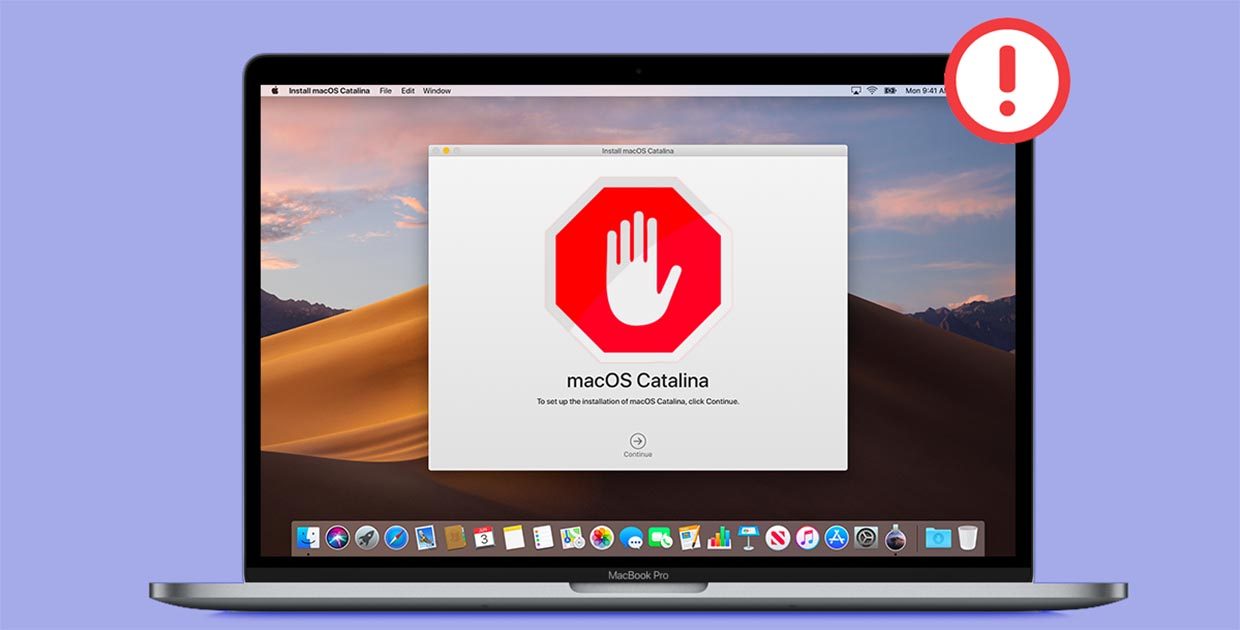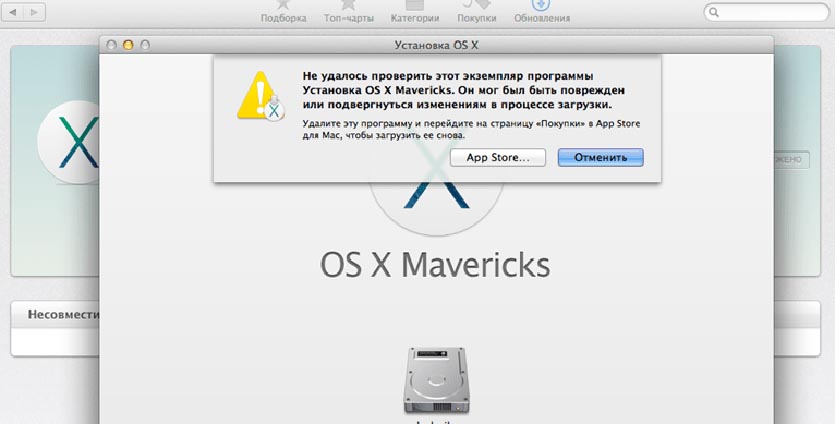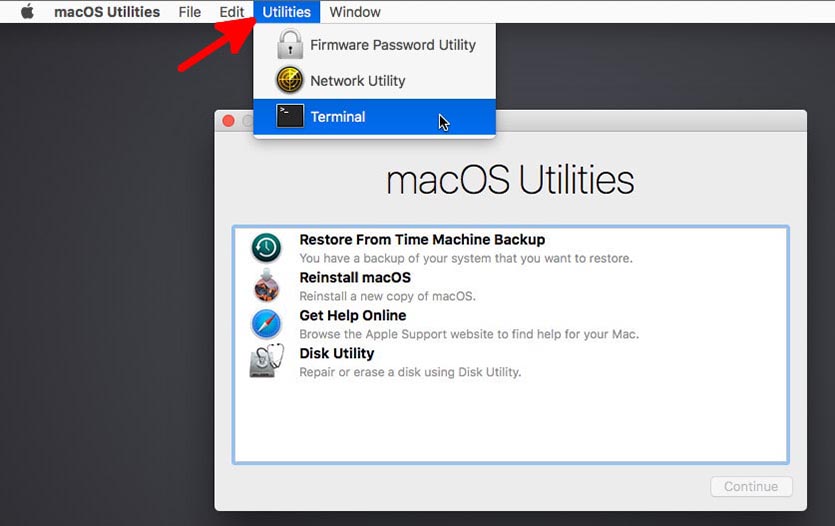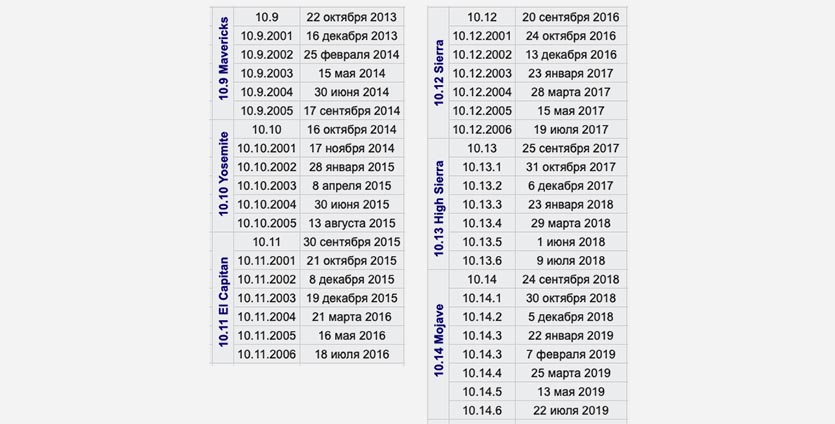no packages were eligible for install при установке mac os что делать
Как устранить ошибку «Не удалось проверить эту копию программы» при установке macOS
При переустановке macOS, обновлении системы или во время восстановления из резервной копии пользователи могут столкнуться с ошибкой:
«Не удалось проверить эту копию программы»
В зависимости от версии системы и локализации текст ошибки может отличаться. В англоязычной системе ошибка может отображаться так: No packages were eligible for install.
При этом система не позволяет продолжить установку, перезагрузка или установка той же системы с другого носителя не помогают.
Почему так происходит
Проблема связана с сертификатами безопасности, вшитыми в установочные файлы операционных систем Apple. Mac проверяет сертификаты и считает их недействительным по причине истечения срока действия (обычно 1 год с момента официального релиза системы).
Скажем, вы откатываетесь с Catalina на High Sierra. Сертификат High Sierra будет считаться истёкшим, и процесс будет остановлен почти сразу после начала.
Поэтому чаще всего такую ошибку видят при попытке сделать даунгрейд на старую macOS: сертификаты, вшитые в их образы установки, уже давно истекли.
Как решить проблему
Просто смените дату на время инсталляции системы.
1. Запускаем Mac с загрузочной флешки или в режиме восстановления.
2. Из строки меню выбираем приложение Терминал.
3. Вводим следующую команду:
date mmddHHMMyy
Где: mm – месяц (от 01 до 12),
dd – дата (от 01 до 31),
HH – часы (от 00 до 23),
MM – минуты (от 00 до 59),
yy – год.
Следует указать дату приближенную к дате выпуска устанавливаемой версии системы (+5-7 дней после даты релиза).
Вот даты выхода последних версий macOS:
Выбирайте подходящую и устанавливайте дату при помощи команды.
4. Закрываем Терминал и продолжаем установку системы.
Question: Q: Can not install OS X error.
Am trying to install El Capitan on an external drive, and is stucked at this error;
«OS X could not be installed on your computer
No packages were eligible for install. Contact the software manufacturer for assistance.
Quit the installer to restart your computer and try again.»
even with installation attempts to set date at terminal to current time or installation attempts to from downloading OSX from App Store or installation of OSX from bootable USB.
Posted on Oct 26, 2019 1:17 PM
Try an El Capitan install but before go to utilities once booted in the installer and then go in terminal and change the date to mid 2017. That should work.
Posted on Nov 7, 2019 6:59 PM
Helpful answers
Hi everyone, you all know by now that you need to adjust date to fix this but what really works is to adjust the date to mid 2017. It won’t work if you adjust to current date.
There’s more to the conversation
Loading page content
Page content loaded
Oct 26, 2019 1:45 PM
sasly hardware not compatible beyond El Capitan.
Oct 27, 2019 3:30 AM
I am working with a MacBook Air 2010 that already had El Capitan installed. I tried to do a fresh install because the storage was all taken up by Other. When I attempt to reinstall El Capitan I am prompted with the «OS X could not be installed on your computer. No packages were eligible for install. Contact the software manufacturer for assistance. Quit the installer to restart your computer and try again.» I have corrected the date in the terminal window mentioned in other strings of this problem.
I’m having the same problem. I’m trying for days to install the El Capitan and always appear that message If i Try to do it with a flash drive, when I try to download from the Apple Servers directly appear Service not available. I’m already quitting for a solution on this
Nov 2, 2019 11:11 AM
have Macbook Pro 15″ 2011, 16Gb, i7; sadly not compatible with Catalina, High Sierra takes 10mins to boot or rather stuck at the dreaded apple logo and eventually a grey screen, hence tried installing El Capitan as external drive.
Regardless, now, MacOS recovery of Command (⌘)-R, Option-⌘-R, Shift-Option-⌘-R, or safe boot, are not working. can only boot in Command (⌘)-S (single-user mode); an environment which i do not know how to operate.
rebooting into Apple hardware test (right after startup sound, hold ‘D’ key), found «no errors» for both quick and full tests.
do not know what else to do.
Hi everyone, you all know by now that you need to adjust date to fix this but what really works is to adjust the date to mid 2017. It won’t work if you adjust to current date.
Still in the middle of install but I tried a date of 06 06 2016 and I seem to have gotten over that hurdle. Install seems to be progressing, although slowly. But better than not at all! Thanks!
Nov 6, 2019 11:58 PM
I had the same problem with a MacBook Pro 5, 1 late 2008 vintage that is supposed to be able to run El Capitan. In fact it was running El Capitan before I erased the disk and tried to do a clean installation using MacOS Recovery.
I tried every trick that everyone has posted herein and NOTHING worked. If I downloaded and tried to install, got the «OS X could not be installed on this computer» error. If I changed the system date and tried to download the installer, I got an immediate error message that would not let me download the installer.
Question: Q: Unable to install El Capitan: «No packages were eligible for install»
During installation of El Capitan I receive the error: «OS X could not be installed on your computer. No packages were eligible for install.«
I am presented with the option to restart, after which the computer enters the installer again and I am shown the same error. Holding down the option key during reboot gives me the option to enter the OS X installer or the Recovery disk. From the Recovery disk (version 10.11) I am able to use Disk Utility to verify that everything is in order with the hard drive. Attempting to use the Reinstall OS X option fails and I am given the message: «An error occurred while preparing the installation. Try running this application again.» Repeated attempts have shown the same error.
The laptop is a mid-2009 MacBook Pro (previously) running the latest version of Yosemite (10.10.5).
Ideally I’d like to either continue with the installation of El Capitan or return to the version of Yosemite already installed on the laptop. At the moment the laptop is unusable. I have a time machine backup of Yosemite I could revert to if need be.
Anybody else experience this problem? Any tips would be greatly appreciated.
MacBook Pro, OS X El Capitan (10.11), Mid-2009
Posted on Oct 1, 2015 1:28 AM
I was able to finish the installation after creating a bootable El Capitan USB drive on a different computer (using these instructions), and booting into it by holding the Option key during startup. I then selected the Install/Upgrade option before receiving an error that stated: «This copy of the Install OS X El Capitan application can’t be verified. It may have been corrupted or tampered with during downloading.» After researching this error, I was able to find a workaround by entering Terminal (via the Utilities menu) and resetting the system clock to the correct time (using these instructions), then proceeding with the installation.
After that, the installation preceded normally, albeit VERY slowly. I left my laptop running for several hours before it became usable. Now however everything is working normally again. Even if things appear unresponsive, be patient – waiting appears to pay off.
Mac stuck in «El Capitan» installer loop: «no packages were eligible for install»
My problem is that my Mac starts up to the «El Capitan» installer. After restarting several times, OS X is still on screen telling me that «no packages were eligible for install».
Can someone help please, and can you bear in mind that I’m not technically minded so keep instruction in simple terms.
4 Answers 4
As explained here, OS X 10.11 «El Capitan» fails to install because it is too old (the technical reason being that the signing certificate is no longer valid).
But you can trick the OS X installer into thinking that it is 2017 and it will happily run without any errors.
How to trick the OS X installer
When the OS X installer complains that «No packages were eligible for install» and displays this window:
don’t restart your Mac.
Turn Wi-Fi off or unplug the Ethernet cord, depending on your configuration, to prevent your Mac from connecting to the Internet:
Click the window that appears:
and type date 0115124517 (this will reset the date to Jan 1st 12:45 2017). After typing the command, press Enter:
Terminal will confirm that the date has been changed with a line of output that displays the new date.
In the OS X installer window, press Restart:
When your Mac comes back up, disable Wi-Fi and leave the Ethernet cord unplugged, as explained in step 2, and press Continue:
Read the software license agreement, press Agree to accept it and press Continue:
Select the disk on which you want to install «El Capitan» and press Continue (note that the icon and name of the disk will be different in your case) (there is usually only one option. If you have several options because the Time Machine drive is plugged in to your computer, make sure you select the correct drive and not the Time Machine drive):
The installation should now proceed without any errors:
Question: Q: No packages were eligible for install. Why? Now what?
MacBook Pro 13″, macOS 10.13
Posted on Oct 20, 2021 6:13 PM
Is the USB installer you are using to install El Capitan using an older version of the Install OS X El Capitan.app
(i.e. prior to October 2019) if so this may be the reason why you are getting the error message
In October 2019 the certificates for several older Mac OS X’s and macOS’s expired, running these older installers
will not install and will give the error message you described.
Apple did release revised versions of these installers with valid certificates up to October 2029.
You can download the valid installer disk image for El Capitan by clicking on the link below.
Open your Safari browser and click on the link below,
Go to the Download section and click on OS X El Capitan 10.11.
this downloads InstallMacOSX.dmg to your Downloads folder.
The next section can only be done on a mac that is capable of running El Capitan.
This includes macs that have the potential to run El Capitan but have been upgraded to a newer OS.
A mac that came preinstalled with an OS later than El Capitan will refuse to do the next bit.
When downloaded open to InstallMacOSX.pkg, double-click on
that and an installation window will open, this does not install El Capitan
but converts the InstallMacOSX.pkg to the Install OS X El Capitan.app which
you will find in your Applications folder, it should be 6.2GBs in size.
(If the installation window asks which disk you want to install to, you must pick
the disk that you are booted to at the time. Not any internal or external disk that
you want to eventually install El Capitan on, that is for later.)
Create a bootable USB installer disk using the Install OS X El Capitan.app in the Applications
folder and the createinstallmedia command in the Terminal app.













